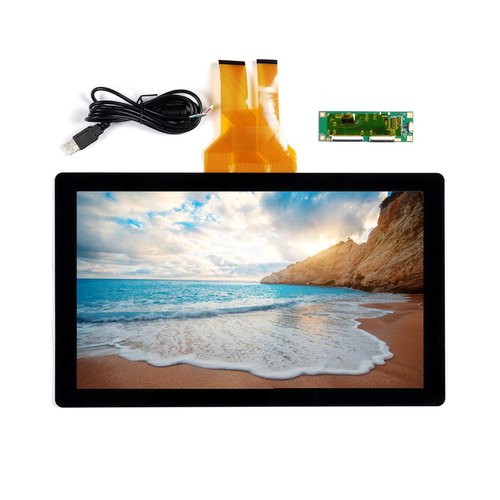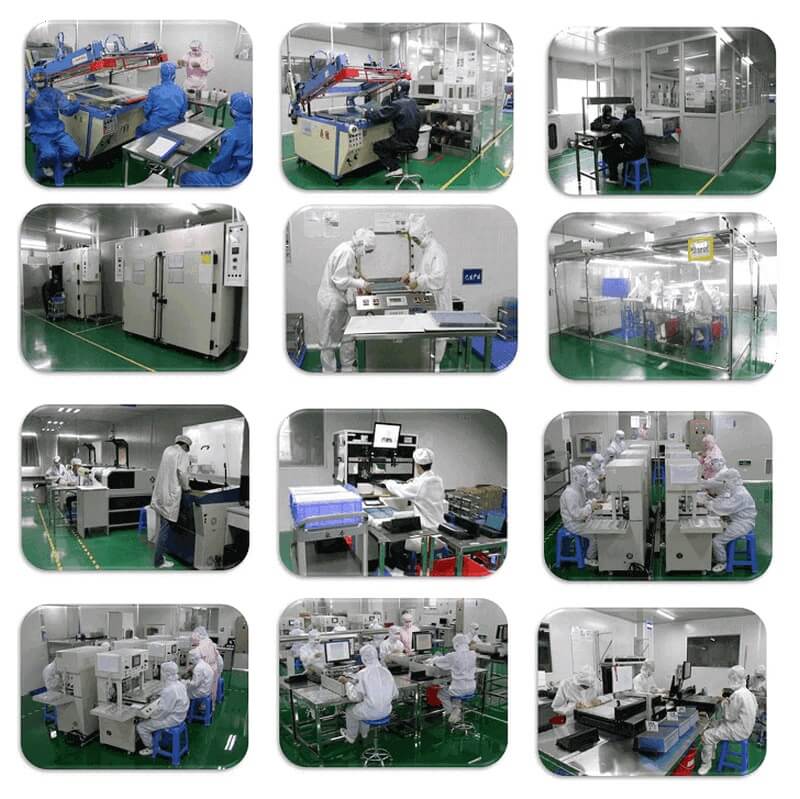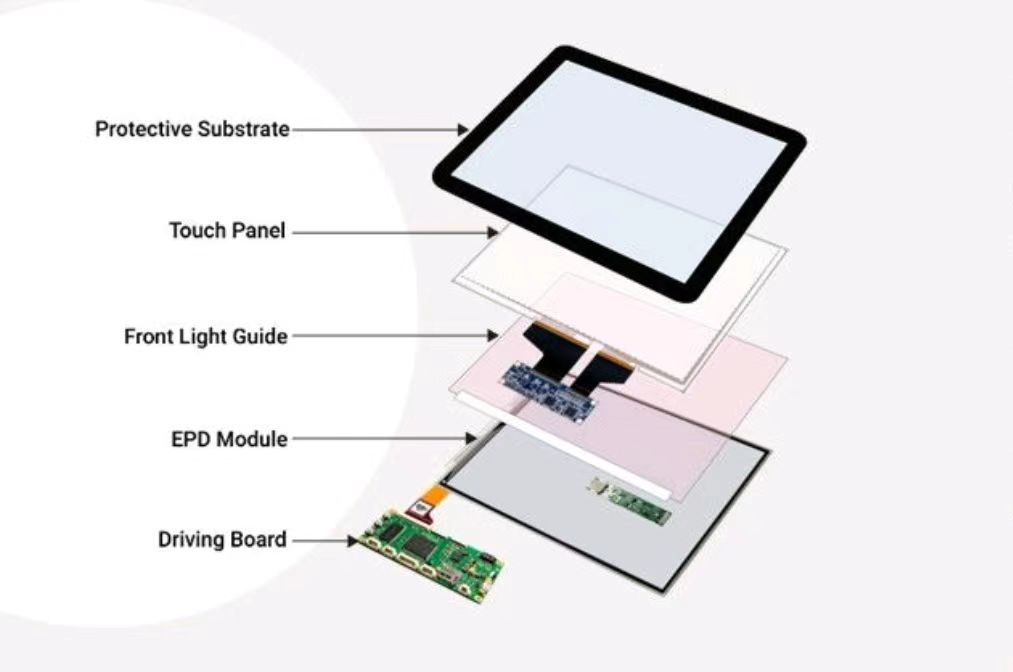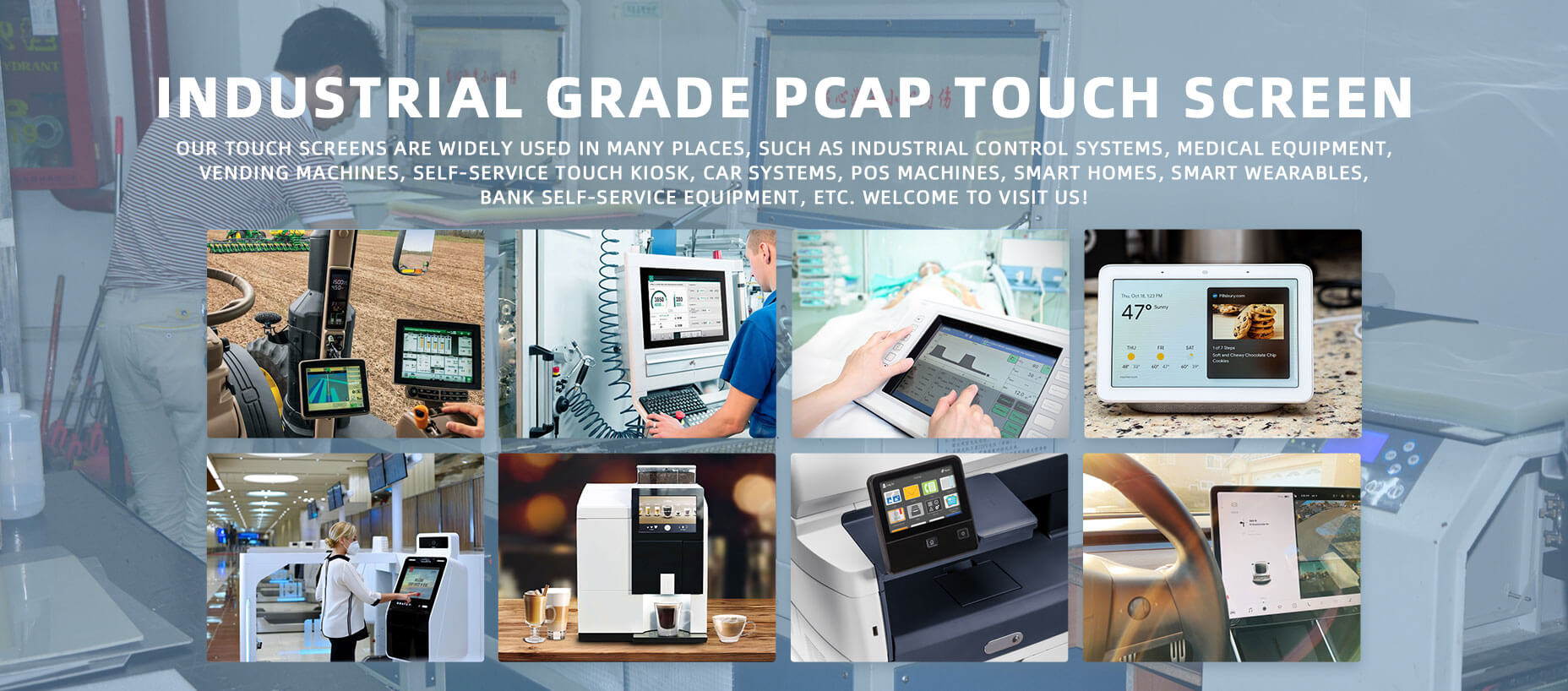News
DINGTouch:The Ultimate Guide to Understanding LCD Touch Display Technology

DINGTouch:The Ultimate Guide to Understanding LCD Touch Display Technology
As technology continues to evolve, LCD touch displays are expected to continue to lead the market in the future, bringing new possibilities and enhanced experiences to consumers and industry professionals. Whether it is choosing the right touch screen or tracking the latest trends, mastering this information will help you gain an advantage in this rapidly developing field.
Table of Contents
- Introduction to LCD Touch Display Technology
- How LCD Touch Displays Work
- Types of LCD Touch Displays
- Applications of LCD Touch Displays
- Advantages of LCD Touch Displays
- Future Trends in LCD Touch Display Technology
- Choosing the Right LCD Touch Display for Your Needs
- Maintenance and Care for LCD Touch Displays
- Frequently Asked Questions (FAQs)
- Conclusion
1. Introduction to LCD Touch Display Technology
LCD (Liquid Crystal Display) touch display technology has revolutionized the way we interact with devices, offering sleek designs and intuitive interfaces that have become integral in numerous applications. From smartphones and tablets to industrial controls and medical devices, LCD touch displays are a ubiquitous presence in our daily lives. This guide delves into the intricacies of LCD touch display technology, exploring its working principles, types, applications, advantages, and the future trends that are set to shape its evolution.
The advancements in LCD touch display technology have made it more accessible and versatile, catering to a wide array of user needs. For industry professionals and technology enthusiasts, understanding the nuances of this technology is essential as it continues to influence the way we communicate, work, and interact with the world around us.
2. How LCD Touch Displays Work
To fully understand LCD touch display technology, it is crucial to first grasp the components that make up these displays. An LCD touch display is composed of two main parts: the LCD screen and the touch sensing layer.
2.1 The LCD Screen
The LCD screen functions by manipulating light through liquid crystals. These crystals align in response to an electric current, allowing or blocking light to create the images we see. A backlight provides the necessary illumination, ensuring visibility across different lighting conditions.
2.2 The Touch Sensing Layer
The touch sensing layer, which sits atop the LCD screen, can employ either resistive or capacitive touch technology.
-
Resistive Touch Technology: Involves two conductive layers separated by a small gap. When pressure is applied to the screen, the layers make contact, completing an electrical circuit that identifies the touch location. This cost-effective technology works with any input method, including fingers and styluses.
-
Capacitive Touch Technology: Utilizes the electrical properties of the human body. The screen is coated with a transparent conductor, and when a finger touches it, the local electrostatic field changes, allowing the device to detect the touch. Capacitive screens are more sensitive and often support multi-touch gestures, providing a superior user experience.
3. Types of LCD Touch Displays
LCD touch displays come in various types, each tailored to specific applications and user needs.
3.1 TFT LCD Displays
Thin-Film Transistor (TFT) LCDs are known for their high resolution and color accuracy, making them ideal for devices like smartphones, tablets, and monitors.
3.2 IPS LCD Displays
In-Plane Switching (IPS) technology offers improved color reproduction and wider viewing angles, which are highly sought after in high-end smartphones and tablets.
3.3 AMOLED Displays
Although not strictly an LCD technology, Active Matrix Organic Light Emitting Diode (AMOLED) displays are often compared to LCDs due to their vibrant colors and deep blacks, which make them popular in premium devices.
3.4 Projected Capacitive Touch (PCT) Displays
PCT displays provide more accurate touch detection and support multi-touch input, making them suitable for high-end devices, interactive kiosks, and industrial applications.
4. Applications of LCD Touch Displays
The versatility of LCD touch displays has led to their widespread adoption across various industries, enhancing user experience and operational efficiency.
4.1 Consumer Electronics
LCD touch displays have transformed personal devices such as smartphones, tablets, and smartwatches, making them more intuitive and engaging.
4.2 Industrial Controls
In industrial environments, touch displays are essential for operators to efficiently interact with machinery and control systems.
4.3 Medical Devices
LCD touch displays are integral to diagnostic equipment and patient monitoring systems, providing quick access to vital data and control functionalities.
4.4 Automotive Applications
Modern vehicles utilize touch displays for navigation, entertainment, and vehicle control systems, significantly enhancing the driving experience.
5. Advantages of LCD Touch Displays
LCD touch displays offer numerous benefits that make them the preferred choice in a wide range of applications.
5.1 User-Friendly Interface
Touch displays provide an intuitive interface, reducing the learning curve and improving user engagement.
5.2 Space-Saving Design
The compact nature of LCD touch displays allows for sleeker device designs, ideal for environments where space is at a premium.
5.3 Versatility
With a variety of types and technologies available, LCD touch displays can be tailored to meet specific user requirements across different industries.
5.4 Durability
Modern LCD touch displays are built to withstand harsh conditions, making them suitable for both indoor and outdoor applications.
6. Future Trends in LCD Touch Display Technology
As technology advances, LCD touch displays are expected to evolve in exciting ways.
6.1 Enhanced Interactivity
Future touch displays will incorporate features such as gesture recognition and haptic feedback, offering a more immersive and interactive user experience.
6.2 Foldable and Flexible Displays
The rise of flexible electronics will lead to the development of foldable touch displays, opening up possibilities for innovative device designs.
6.3 Integration with AI
Artificial Intelligence (AI) will enhance the functionality of touch displays, enabling smarter user interactions and personalized experiences.
7. Choosing the Right LCD Touch Display for Your Needs
Selecting the right LCD touch display involves careful consideration of several factors to ensure optimal performance for your specific application.
7.1 Determine Your Application
Identify the primary use of the display, whether for consumer electronics, industrial equipment, or medical devices, as different applications have distinct requirements.
7.2 Screen Size and Resolution
Consider the appropriate screen size and resolution based on the intended use. Higher resolution is crucial for detailed images, while screen size impacts usability.
7.3 Touch Technology
Choose between resistive and capacitive technology depending on the application. For example, resistive displays may be better suited for rugged environments, while capacitive displays are ideal for consumer devices.
7.4 Environmental Considerations
Take into account the operating environment. Factors such as temperature, humidity, and exposure to elements like dust and water should influence your choice.
8. Maintenance and Care for LCD Touch Displays
Proper maintenance is essential for prolonging the lifespan and maintaining the performance of LCD touch displays.
8.1 Regular Cleaning
Use suitable cleaning solutions and microfiber cloths to keep screens free from dust, fingerprints, and smudges.
8.2 Software Updates
Keep the device’s software up-to-date to ensure compatibility with the latest features and security enhancements.
8.3 Protective Accessories
Consider using screen protectors and cases to prevent physical damage and extend the life of the display.
9. Frequently Asked Questions (FAQs)
9.1 What is the difference between resistive and capacitive touch technology?
Resistive touch technology relies on pressure to register input, while capacitive touch technology uses the electrical properties of the human body for more sensitive and accurate touch detection.
9.2 Are LCD touch displays suitable for outdoor use?
Yes, many modern LCD touch displays are designed to be weather-resistant and can function effectively in outdoor environments.
9.3 How do I clean my LCD touch display?
Use a soft microfiber cloth and a gentle cleaning solution designed for electronics to avoid damaging the screen.
9.4 What applications are best suited for LCD touch displays?
LCD touch displays are widely used in consumer electronics, industrial controls, medical devices, and automotive applications, among others.
9.5 What are the future trends in LCD touch display technology?
Future trends include enhanced interactivity, flexible displays, and integration with AI for smarter user experiences.
10. Conclusion
LCD touch display technology has become a cornerstone of modern interaction across various industries. Its ability to provide intuitive interfaces, coupled with advancements in display and touch technologies, opens new avenues for innovation. Understanding the workings, types, applications, and ongoing trends in LCD touch displays equips professionals and enthusiasts with the knowledge to adapt to this ever-evolving landscape. As we move forward, keeping an eye on future developments will be essential for leveraging the full potential of this transformative technology.
DINGTouch:Committed to continuous innovation and improvement of product quality to meet customers' high requirements and expectations.
DINGTouch is a manufacturer that provides high quality touch screen panels. Focus on the design, manufacturing and sales of touch screen panels, and are committed to providing customized solutions that satisfy customers.
DINGTouch: In the process of customizing touch screen panels, we focus on close cooperation and communication with customers. Understanding customers' needs and providing customized solutions will meet customers' individual needs. The company's products are favored by customers for their high quality and reliability, and provide them with the best touchscreen panel solutions.
At DINGTOUCH, we are the world's leading touchscreen manufacturer, helping businesses around the world take advantage of this exciting technology. For more information, please visit the home page now.
Find the DINGTouch technical team to achieve the success of your company's new project.
How to choose touch screen customization?
DINGTouch is a company specializing in the R&D and production of touch screen technology, headquartered in Shenzhen, China. As a professional touch screen supplier, DINGTouch is committed to providing high-quality, stable and reliable touch screen products to meet the diverse needs of customers. We continue to carry out technological innovation and product optimization to ensure that its touch screen products have good sensitivity, accuracy and durability.
In addition to the products themselves, we also focus on cooperation and communication with customers, and are committed to providing customized solutions and excellent after-sales services. Through continuous efforts to improve product quality and customer satisfaction, we have established a good reputation in the touchscreen industry and won widespread market recognition.
What DINGTOUCH can do:
• PCAP maximum size 65”
• Multi-touch (Touch screen can be customized to your needs.)
• Optical bonding service/air bonding
• LCD interface: HDMI/RGB/MIPI/LVDS/EDP, etc.
• PCAP interface: IIC/USB interface
• CTP can customize the cover glass surface treatment process AG (anti-glare), AR (anti-reflection), AF (anti-fingerprint), waterproof, and glove touch
• Supports 0.55 mm-12 mm coverslip touch.
• Support operating temperature: -40℃-90℃.
Dingtouch Industrial Capacitive Touch Screen Manufacturer
In conclusion, Dingtouch as a professional touch screen manufacturer with more than 10 years touch screen experience.We have many capacitive touch screen. Such as5 inch touch screen,7 inch touch screen,10.1inch touch screen,15 inch touch screen,15.6 inch touch screen,17 inch touch screen,18.5 inch touch screen,19 inch touch screen,21.5 inch touch screen,32 inch touch screen, However, we also welcome to customize your own touch screen . Contact our team today to learn what capacitive touch screen are best for our retail business needs.
Contact us NOW! sales@szdingtouch.com

CATEGORIES
CONTACT US
Contact: Dingtouch
Phone: +8615815536116
Tel: +8615815536116
Email: sales@szdingtouch.com
Add: Building A, Bailu Plaza, No. 48, Gonghe Industrial Road, Gongle Community, Xixiang Street, Baoan District, Shenzhen,China. 518126




 Dingtouch
Dingtouch